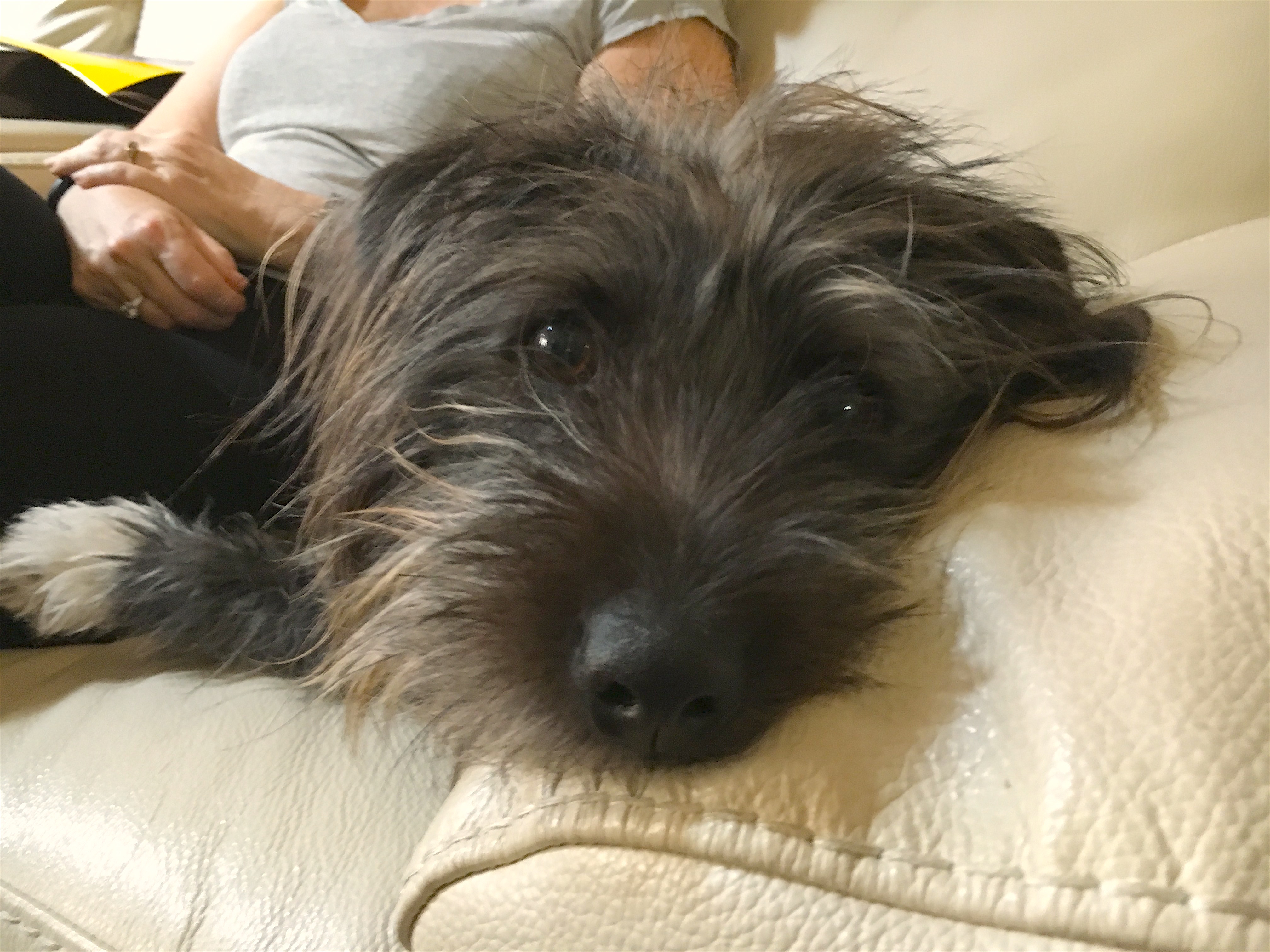How to Train a Dog to Stop Pulling on the Leash in West Hollywood
By: David Codr
Published Date: March 6, 2017
Squink is a ten-month-old Terrier mix who lives in West Hollywood, California. His guardians set up a dog behavior training session with me to get him to stop barking, stop getting over excited and stop pulling on the leash on walks.
Squint’s guardian had him on the leash when she opened the door. Usually this is an approach adopted by people with dogs who like to run out the open door. But in Squink’s case, they had added the leash to the arrival ritual to curb his barking, an old but effective tip to stop dog barking.
When I sat down with the guardians, I shared a number of tips to stop the dog from barking and getting over excited. Many people confuse excited for happy when it comes to dogs, but a dog does have to be excited to be happy. This is why I suggest people don’t excitedly, and repeatedly ask a dog “if it wants to go on a walk” as they leash it up.
I wanted to see just how excited Squink got during the leashing process, so I asked his guardians to show me.
While this wasn’t the most excited leashing scenario I have ever seen, it was clear that the excitement was making it difficult for Squink to listen to his guardian’s instructions.
I shared a number of dog training tips to help Squink calm down throughout the leashing process, then we practiced the leashing process a few times to help Squink understand what behavior was expected.
The energy a dog has when you put it on the leash is the energy the dog is likely to have on the walk itself. So eliminating the narration, excited talk and stopping when the dog moves in front or the instant it gets excited all helped Squink learn he needed to stay calm in order to continue.
Now that Squink was in a calm and balanced frame of mind, I shared my structured dog walking tips with the guardian and showed her a special twist of the leash she can apply to give her more control on the walk.
With a new strategy in place, a new leash technique and a calm dog ready to go, we headed out for a short walk in Squink’s neighborhood to do some leash training. This gave me a chance to show the clients why many people say I’m the best dog behaviorist in Los Angeles.
It was great to see Squink walking in a heel next to his guardian without pulling her arm out of her socket. Many people see a dog pulling on the leash as the dog being “naughty,” but I find its usually a combination of an over excited dog and the failure of the humans to train the dog on the behavior they expect from it in the first place.
Training a dog to behave on the leash isn’t hard, it just takes a little time and practice.
ROADMAP to SUCCESS
- Introduce rules and boundaries and consistently enforce them.
- Start petting Squink with a purpose
- Any time Squink’s teeth touches a human, they need to yelp loudly and freeze.
- Practice the recall exercise at least two times a day for the next 2 week.
- Stop petting Squink when he is over excited. Continue when he calms down.
- Do some remedial potty training with a new command word.
- Avoid playing too roughly with Squink or play lighter and stop when he gets over excited.
- Use passive training to reward Squink for engaging in desired behaviors.
- Practice leashing up Squink and stopping any time she moves in front or gets excited.
- Stop and wait for Squink to come back any time he gets in front on walks.
- When Squink is over excited or stops listening due to seeing another dog, make a turn and walk away or move to a place where he can’t see the other dog or increase the distance.
- Be sure to correct or reward Squink within 3 seconds to help him learn what is and isn’t desired.
- Add structure to meal time and always have the feeder eat 5 or more bites of something before giving Squink permission o eat.
Categorized in: Dog Behavior


